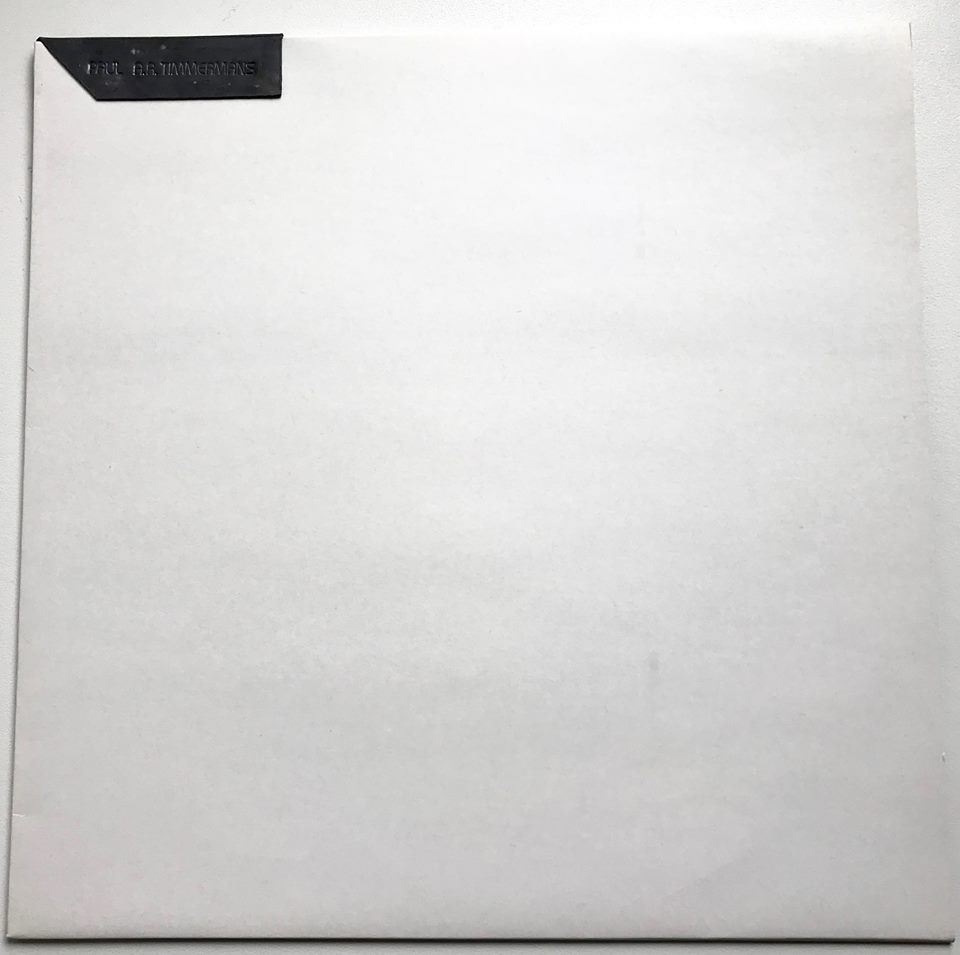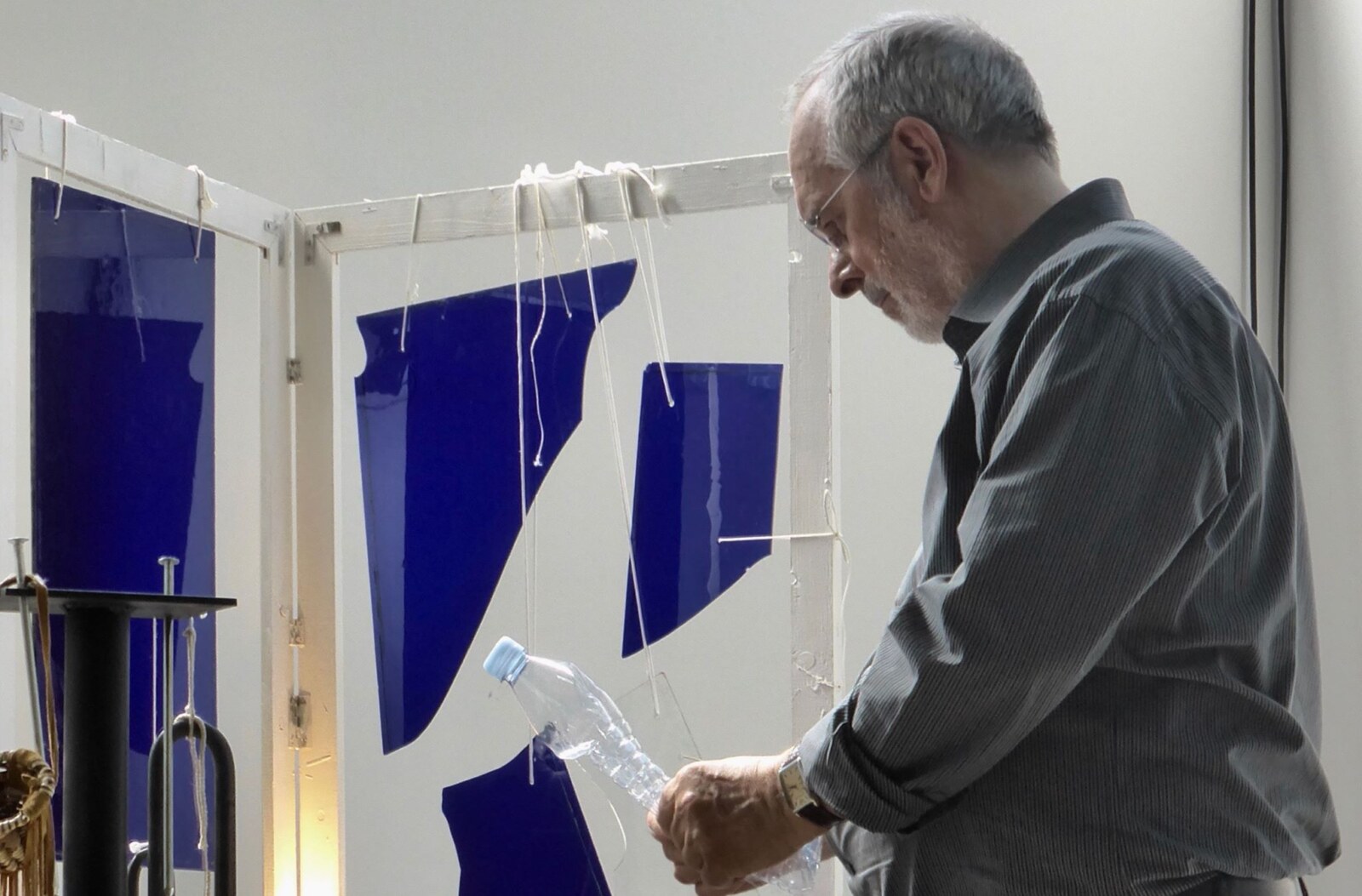Paul A.R. Timmermans
Paul A. R. Timmermans (aka P-ART) released Meta in 1983, now considered a cult album. Timmermans has an archive of unpublished piano material.
What can you tell us about Meta?
Meta was my first self released record. Before that, Baudouin Oosterlynck, who I know since 1971, listened to my Revox tapes and helped me to make choices what to use. I payed for everything else. Jean Decoster did the album artwork and Ward Weis did the mastering.
“Organic is the key word in my musical world.”
What are your thoughts about Meta after 35 years?
If I listen to it today, 35 years years later, I still think it’s a good record, it didn’t lose any of its organic radiance. At least not for me. ‘Organic’ is the key word in my musical world.
I found your album via Creel Pone reissue made by Keith Fullerton Whitman.
I don’t know anything about that. It would be only fair if the artist, which is me, would have had the chance to approve the reissue, and maybe get some royalties. It’s not as if it’s not possible to contact me. I’m online. You can find me on the internet if you want to. You can contact me over email. You have bad intentions if you do bootleg reissue without letting me know.
“Intuitive music”
Where can we find out more about you and your music?
The most important thing is my website, using the name P-ART aka Paul A. R. Timmermans. You can find it here: users.skynet.be/P-ART/
I would strongly advice you to have a look at this site. It tells you what I think, which kind of music I make with which instruments, how I make music, and so on. It includes sound installations, written versions of my music and much more. You can find Youtube clips of my concerts and my P-ART DVD projects.
I listed up the musicians and artists that I believe are special and share the same perspective on alternative new music. It’s a list of worldwide artists. It’s a long list of artists who were willing to comment their work and add original music for the DVD. I’m the curator and producer of these DVD and booklet, all non-profit. You can find them on my site.
No matter if I compose with either sound objects or with a synthesizer or if I’m making instant compositions on an acoustic piano (which resulted in hundreds of piano pieces since 2007, 144 unpublished CDs and hundreds of MIDI and audio files since 1984), no matter which material I used to create sound, the composing process was always the same: I’m looking for something that attracts me in the sound process. I want to be absorbed by what comes to me, and use that as a starting point. Intuitive music. I want to be inspired, without knowing where it’s going to end.

So you didn’t stop after Meta?
I didn’t, even though I never got the chance to get recognition for my work like Baudouin Oosterlynck or Timo van Luyk got.
Do you still play?
I do if they ask me. I played on the 15th of February in Leuven, on Kris Vanderstraeten’s request.
For the last ten years, I’ve been working in an intuitive way with micro tonal scales and micro tonal music. At 7×1 (mei 018, Tielt-Winge, see Youtube) I used the endless possibilities of the vintage ESQ1 synthesizer. The last couple of years, I prefer the program PianoTeq for its stretched out piano sounds and for designing my own digital P-ART scales. That’s what you’ve heard at my concert in Leuven.

How did you get involved in this kind of music?
Even as a child, I was fascinated by music making. I learned to play recorder and accordion. On these instruments, I played tunes I heard on the radio. I also learned how to improvise. This was an evident way of making music for me. For 8 years, I took private piano lessons. This is how I got into the music of Chopin. In my puberty, this music was more important to me that let’s say The Beatles or ABBA. Not that I ever got a freaky attitude towards music.
When I was 28, I started the music magazine Muziekkrant. I was also the chief editor of the magazine. It appeared four times a year. We wrote about interesting new music which didn’t get as much attention as it deserved.
“My priority was not the technical side of music, but the creative and intuitive side of it.”
What do you do professionally?
I was teaching at Lemmensinstituut (now LUCA School of Arts). I wanted to teach as many people, on a scale as wide as possible about music. My priority was not the technical side of music, but the creative and intuitive side of it. I wrote many articles about this subject, see academia.edu.
For the last 8 years, I focused on music related apps for iPad. These kind of apps are really helpful if you want to make music without having to learn to master an instrument for years. It’s really democratic. That’s why I’ve been giving workshops to teachers, social workers and students about music attractive apps and its audio visual possibilities for several years.
– Joeri Bruyninckx




hallo paul!
het is ongelofelijk dat Keith Fullerton Whitman geen contact met je opnam! Ik begrijp het niet … groet